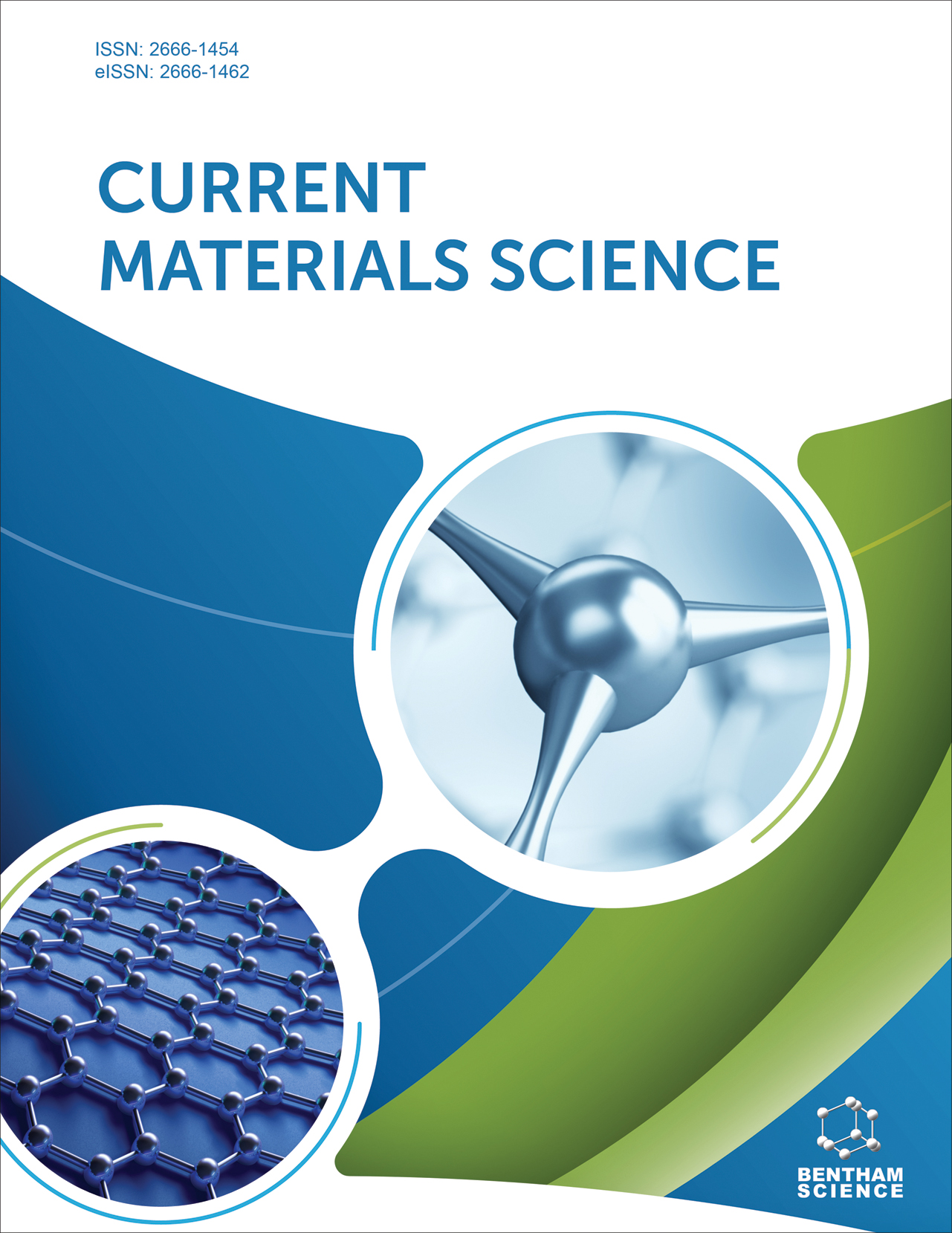- Home
- A-Z Publications
- Current Materials Science
- Previous Issues
- Volume 16, Issue 3, 2023
Current Materials Science - Volume 16, Issue 3, 2023
Volume 16, Issue 3, 2023
-
-
Progress in Polymer-based Composites as Efficient Materials for Electromagnetic Interference Shielding Applications: A Review
More LessDifferent electromagnetic interference (EMI) shielding materials have been developed over time. In the past electromagnetic (EM) shielding technology made use of metals and their composites because of good shielding effectiveness but their low elasticity high density and corrosion tendency render them obsolete. Ceramic-based composites have also gained popularity for EMI shielding applications because of their l Read More
-
-
-
Recent Developments in Catecholic Polymers: Polymerization and Applications
More LessBy Saad MoulayOver the last few years, research on catechol-containing polymers has focused mainly on making mussel-inspired catechol-containing polymers and examining their adhesion ability onto various substrata under dry and wet conditions. Indeed, a surge of dopamine-bearing vinylic monomers such as dopamine acrylates and their protected ones have been homopolymerized or copolymerized with fittingly chosen comonomers Read More
-
-
-
Modified Polysaccharides and their Biomedical Applications: Advancement and Strategies
More LessAuthors: Shilpa Singh, Pramod K. Sharma, Rishabha Malviya and Ashok GuptaBackground: Polysaccharides are a type of natural macromolecular polymer that can be found in plants, animals, fungi, algae, and marine organisms. Its activities have piqued the interest of researchers. The internal structure, as well as their chemical and physical properties, dictate how they work. Polysaccharide functionalities are progressively being chemically changed. Using this approach, polysaccharides' structu Read More
-
-
-
Study on the Properties of Iron-based Alloys 17-4PH Powder Manufactured by Laser Additive Manufacturing
More LessAuthors: Lei Huang, Xizhang Chen, Sergey Konovalov, Chuanchu Su, Xiaoming Pan and Irina PanchenkoBackground: Laser additive manufacturing has been used for surface repair and remanufacturing due to fast laser processing speed, high energy density, and dense microstructure. However, the properties of coating samples produced by laser additive manufacturing of ironbased alloys vary considerably, resulting in a large amount of data that needs to be accumulated and analyzed. Methods: The coating properties of iron-b Read More
-
Most Read This Month
Article
content/journals/cms
Journal
10
5
false
en


